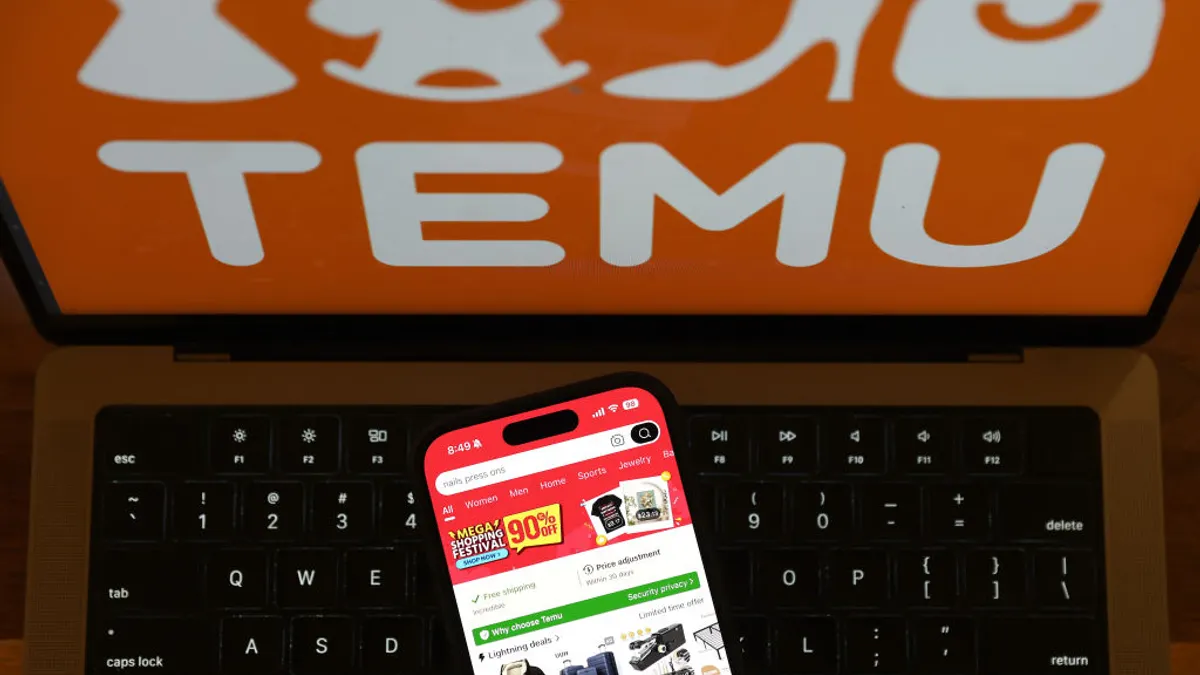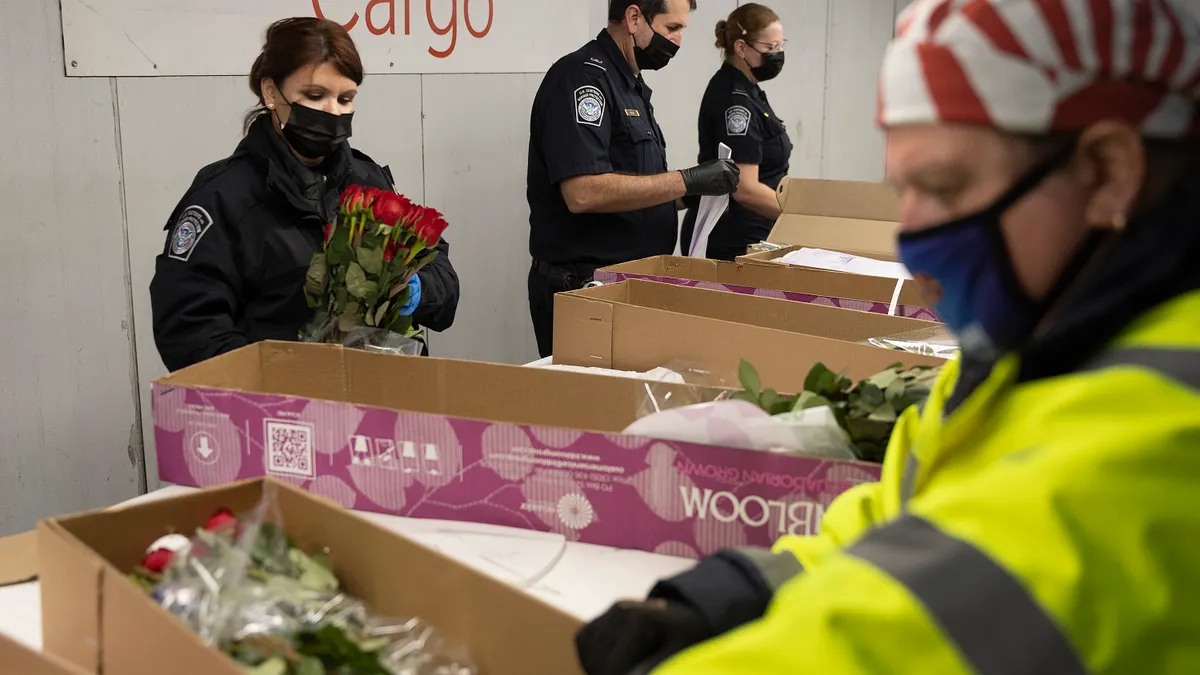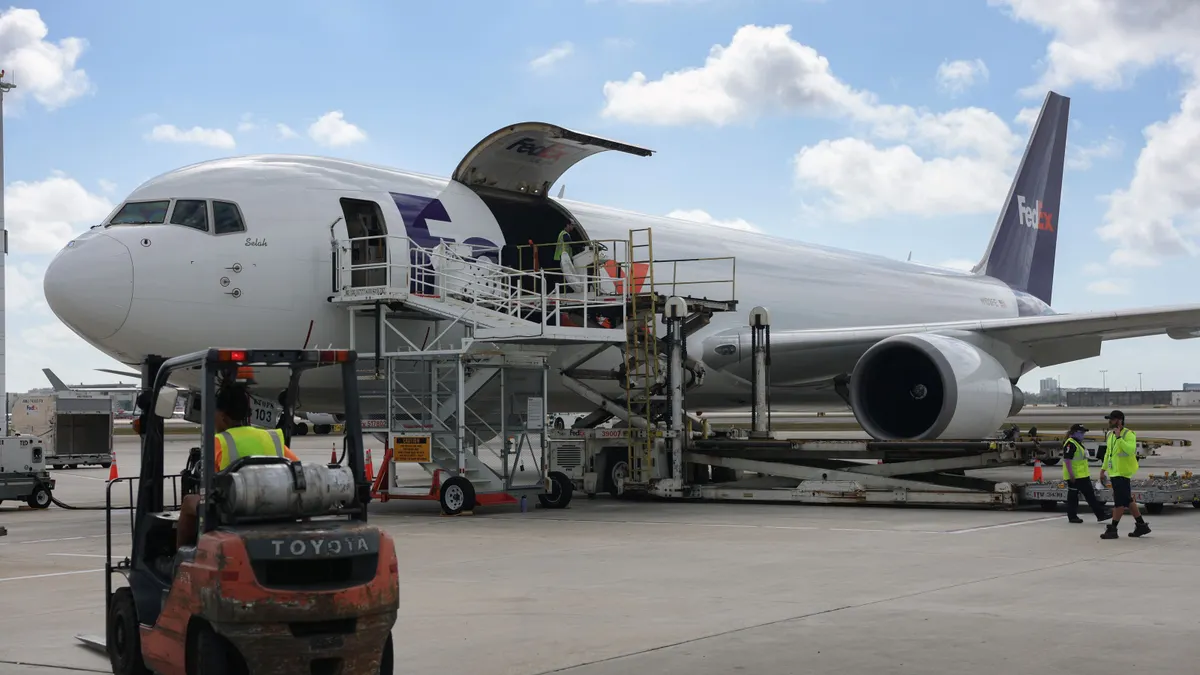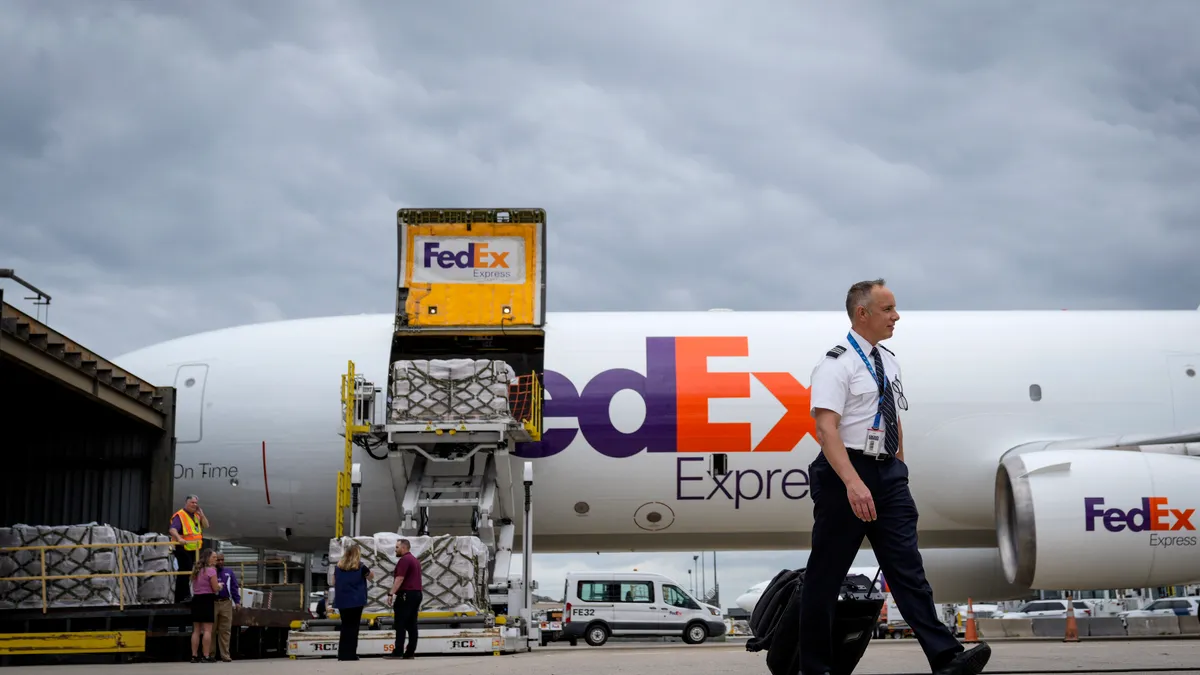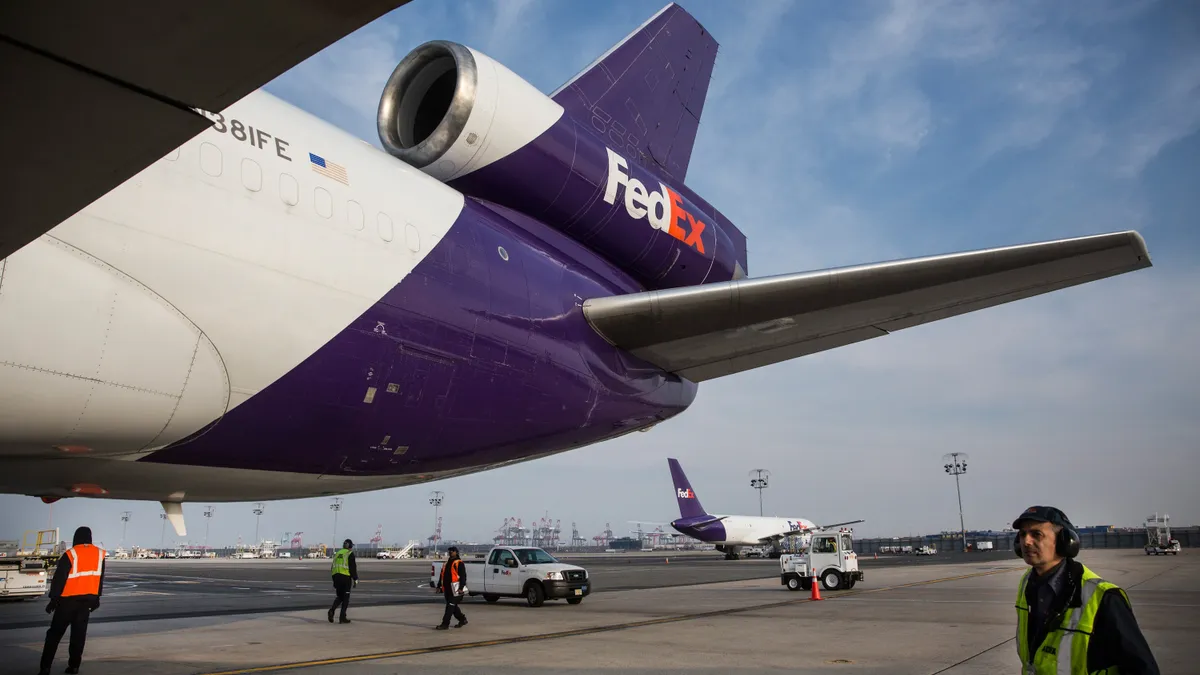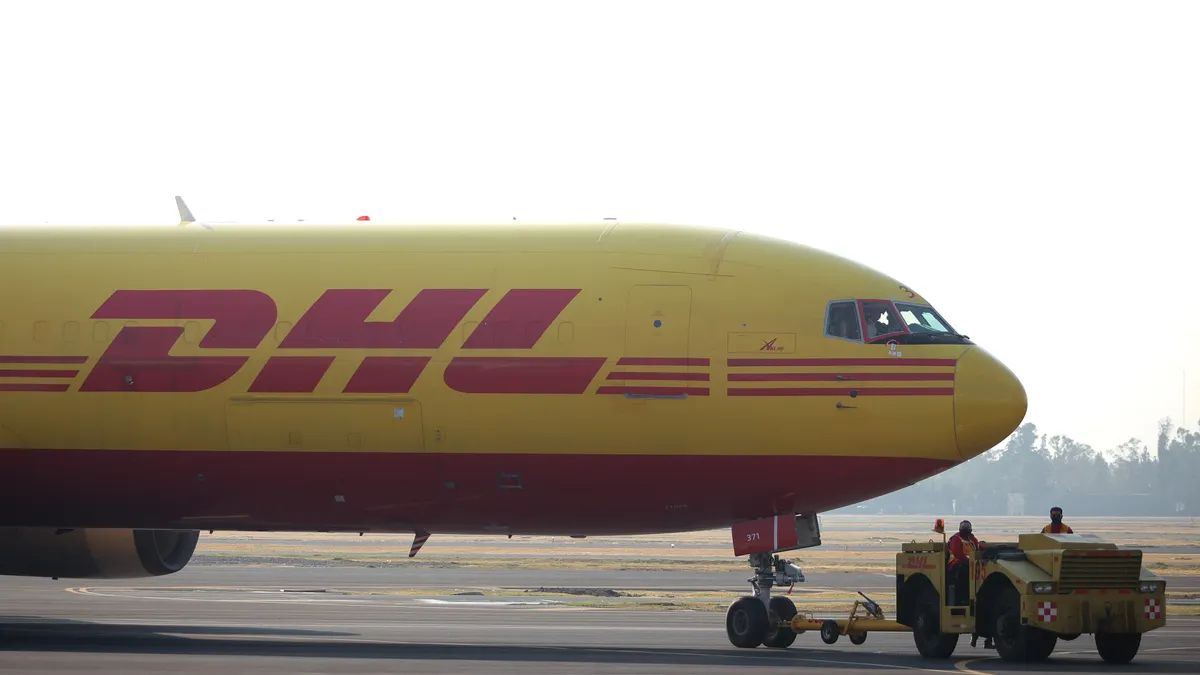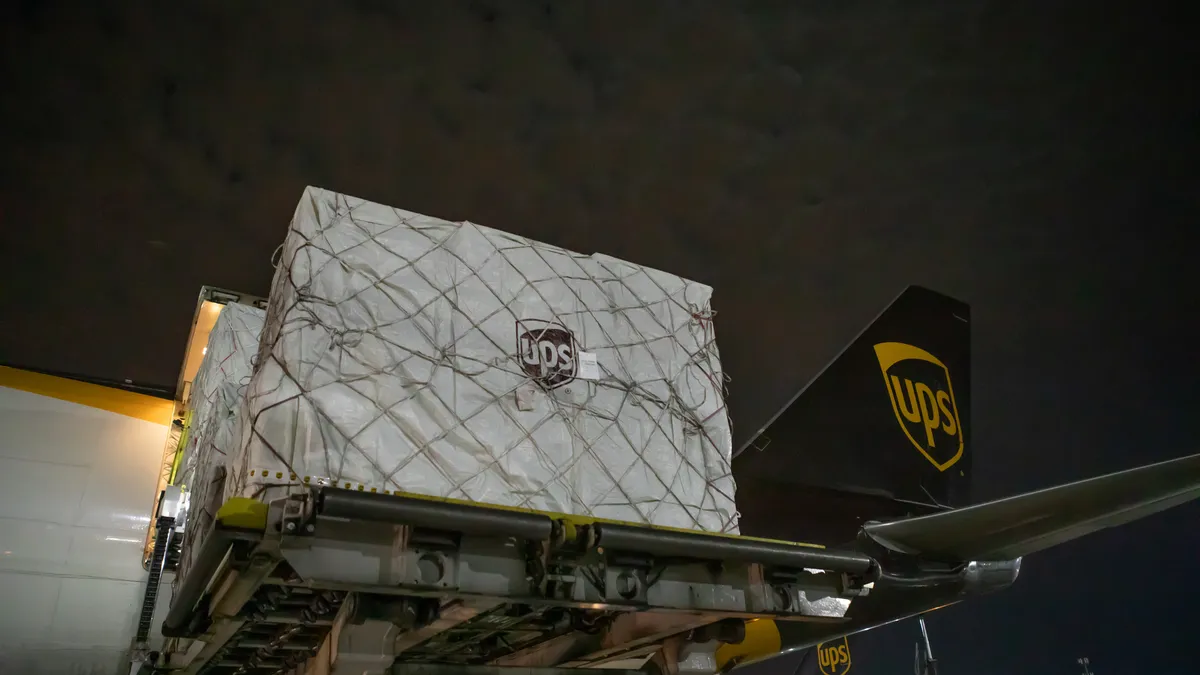A reduction in U.S. tariffs on China-made goods has generated optimism among direct-to-consumer shippers, but there’s still plenty of work ahead for their supply chains to adjust to evolving trade rules.
Direct shipping models have faced tariff and compliance-related turbulence since the U.S. eliminated de minimis eligibility for China and Hong Kong products on May 2. The exemption, which allows sub-$800 imports into the U.S. to avoid added duties, has long helped Shein, Temu and other e-commerce companies keep prices low when shipping China-made orders to consumers.
The trade tool's usage plummeted when the change took effect, as it exposed low-cost imports from China — where the bulk of de minimis activity comes from historically — to 145% tariffs. Daily de minimis volume has seen a decline "upwards of 85%," Chris Mabelitini, director of U.S. Customs and Border Protection's intellectual property rights and e-commerce division, said during a May 7 panel at the agency's 2025 Trade and Cargo Security Summit.
"We've gone from, say, almost 4 million a day to maybe around 600,000 a day," Mabelitini said, according to a recording of the event viewed by Supply Chain Dive. "So it's been a significant decrease in those low-value de minimis shipments coming in.”
De minimis shipments have surged the past two years
At least some of that drop can be attributed to formerly de minimis-eligible products entering the U.S. through other entry methods. One popular option since the changes is Type 11 informal entry, which generally allows sub-$2,500 imports to pass through customs in a more streamlined fashion.
"It's a good indicator that those de minimis shipments are being consolidated into other entry types, which is what we want to see, and the shift that we're looking for there," Mabelitini said.
Tariff pause optimism: Enough for a rebound?
How the 90-day tariff reduction between the U.S. and China, which took effect May 14, will influence direct-to-consumer trade flows from China is up for debate.
For Portless, which provides direct e-commerce fulfillment from the country, President Donald Trump's duties dropping from 145% to 30% has generated optimism among the brands it works with. CEO Izzy Rosenzweig said companies can manage a 30% tariff with cost-savings initiatives and price increases, adding that he hopes ongoing trade negotiations will lower the rate even further.
"Now we're doing a ton of shipments," Rosenzweig said. "Brands are doing marketing again. There is a lot of optimism going on with this discussion, and that there's a bit more structure behind this discussion, and it doesn't feel like it's cowboys just shooting at each other."
Dropping the duty rate is certainly more palatable for shippers, but some experts said it will aid companies' transitions to traditional supply chains rather than fully revive de minimis-associated import methods. Businesses have already been exploring the addition of U.S.-based fulfillment partners and alternative sourcing options, like Vietnam.
With the tariff reduction in place, Cirrus Global Advisors founder Derek Lossing expects a partial rebound in direct-to-consumer shipping activity out of China but not enough to fully recover from recent lows. Many e-commerce sellers will begin shipping bulk inventory via ocean carriers for U.S. storage, rather than using air cargo to ship individual orders to shoppers, he added.
"I think we will see a structural shift from air to ocean long term," said Lossing, a former Amazon Logistics leader.
Temu has been a major driver of air cargo activity out of China in recent years, but the company has relied more on fulfilling U.S. orders via local sellers since the de minimis exemption changes. Lower China tariffs offer an opportunity for the e-commerce marketplace to stockpile inventory in warehouses ahead of any potential duty escalations, according to Thomas Taggart, VP of global trade at Passport, an international shipping and compliance provider.
Alongside the general tariff reduction, the Trump administration lowered the duty rate on international postal volume from China and Hong Kong from 120% to 54%. Transportation carriers can also opt to collect a $100 per-package fee instead. Experts said with the international postal system's limited use in direct-to-consumer shipping, the changes won't make significant waves.
"Postal volume is pretty much nonexistent right now out of China, Hong Kong, Macau, so I don't know if that's gonna encourage people to go back," Taggart said.
Compliance struggles post-de minimis
The de minimis exemption's end for China-origin goods has exposed many importers to tariffs and more stringent information requirements that they could previously avoid. Compliance with the wave of new trade requirements hasn't been consistent or spotless, experts told Supply Chain Dive.
Misrepresenting a shipment's country of origin to evade higher tariffs, such as by giving a China-made product a "Made in Vietnam" label, is one of the illegal tactics experts highlighted. Another illicit approach is shipping an item from China to another country prior to U.S. entry in an attempt to circumvent tariffs on that trade lane.
"We expect to see a rise in country-of-origin fraud via tactics like falsifying customs entry documents, invoices, or product labels, and transshipment where goods are routed through third countries to conceal their true origin," LVK Logistics CEO Maggie Barnett said in an email to Supply Chain Dive.
All products made in China and Hong Kong are ineligible for de minimis treatment, even if they are shipped into another country prior to U.S. entry, CBP noted on its website. This includes products shipped via the international mail system.
"The fallout from getting the country of origin wrong can be pretty wide-ranging and painful."

Maggie Barnett
LVK Logistics CEO
CBP enforcement efforts are becoming more rigorous and shippers can't gamble on avoiding duties by not accurately disclosing the country of origin, Barnett said. For example, shipping provider Chit Chats said its border crossings from Canada to the U.S. were denied on May 2 and May 3 due to some misdeclared China-origin shipments from customers.
"The fallout from getting the country of origin wrong can be pretty wide-ranging and painful," she said. "For example, US CBP can deny entry for shipments or worse, actually seize your goods. You could also be hit with hefty fines much more serious than a slap on the wrist."
Mabelitini didn't bring up any specific compliance issues that emerged after the May 2 de minimis changes. However, the CBP official said during the May 7 panel that the agency is still pushing importers to provide more detailed product descriptions. Vaguely describing the contents of a shipment as a gift or a shirt won't cut it, and the intended recipient should also be accurately listed.
"No one's putting Santa Claus, which we've seen before," Mabelitini said. "There were a lot of superheroes who received packages last year from de minimis.”
Editor’s note: This story was first published in our Logistics Weekly newsletter. Sign up here.



